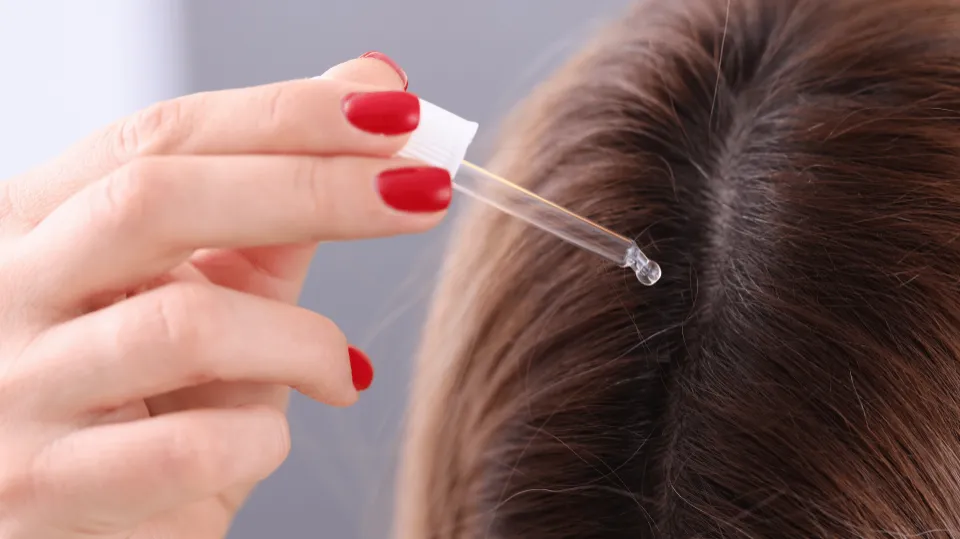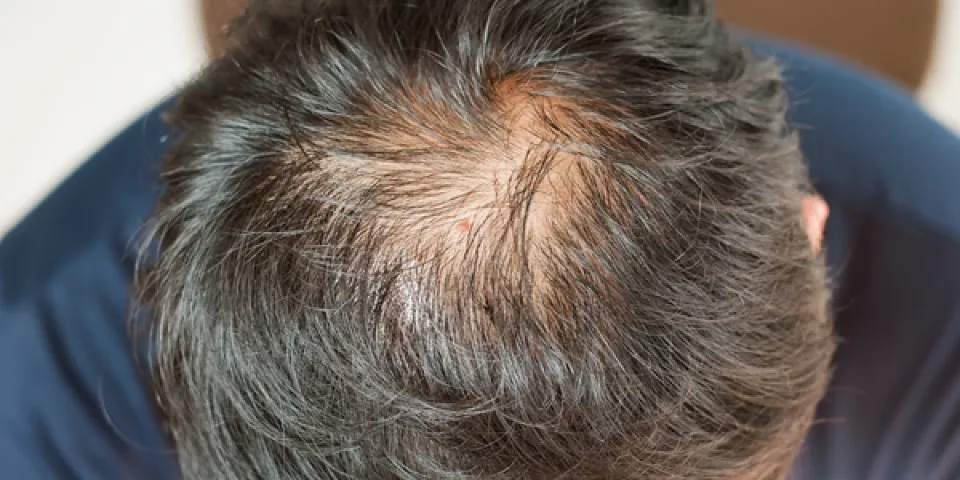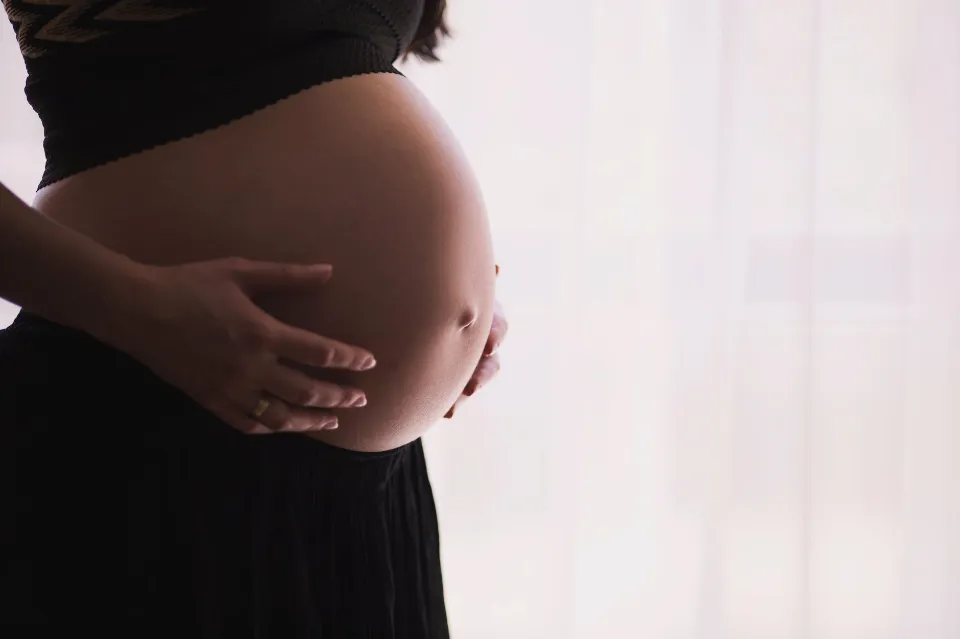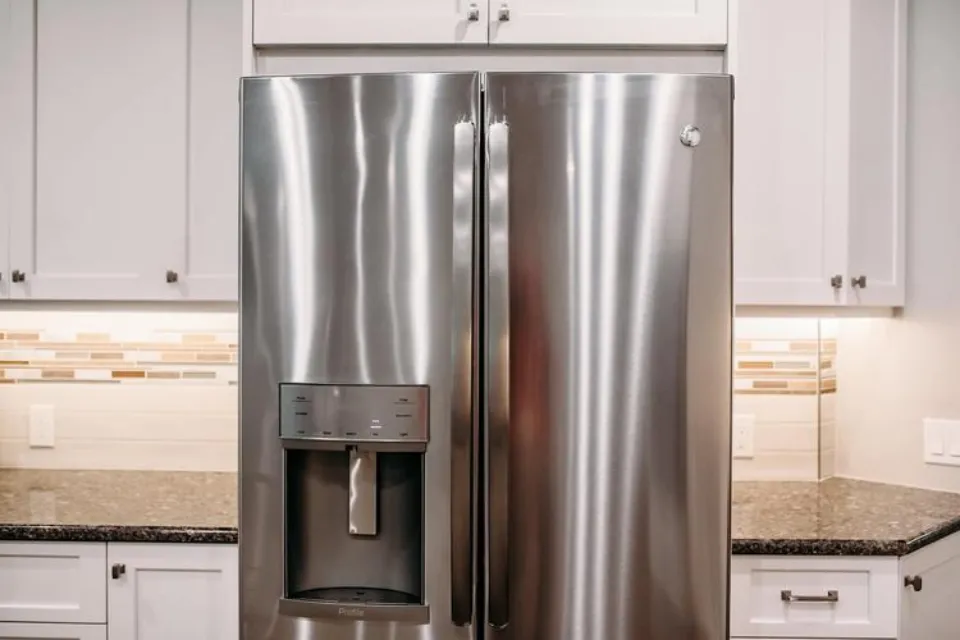Minoxidil (Rogaine) is a popular product for people with thinning hair. The product comes as a gel or a foam, and is meant to be applied topically to your scalp on a daily basis.
After you start using minoxidil, hair loss might persist for another two weeks. When you first start using any topical product containing minoxidil, you should expect to shed a little bit.
Let’s cover hair loss caused by Rogaine so you can understand how common it is, what causes it, and whether you should be concerned.
How Does Minoxidil Work?

A medication called minoxidil was first created to treat high blood pressure.
The world’s most widely used over-the-counter treatment for alopecia was created when researchers noticed that people with alopecia who used minoxidil for hypertension experienced hair growth. People have been using minoxidil to treat hair loss since 1986.
The way that minoxidil works isn’t completely clear. What’s apparent is that minoxidil decreases hair loss in some people while also increasing hair growth. Not everyone finds it effective.
As a vasodilator, minoxidil expands blood vessels to facilitate easier blood flow where it is applied. A possible explanation for minoxidil’s ability to promote hair growth is an increase in blood flow to the scalp.
Minoxidil and the Hair Growth Cycle
The growth cycle of your hair follicles has four stages. Not every follicle is simultaneously in the same phase. Two stages of hair growth are thought to be impacted by minoxidil.
Anagen Phase
The anagen phase of hair growth is its “growing” phase. At this point, the hair is pushed outward from the root. The anagen phase might last longer with minoxidil application.
Telogen Phase
The telogen phase of your hair is its “resting” phase, when it’s done growing but not yet ready to fall out. In clinical trialsTrusted Source on rats, minoxidil shortened the telogen phase of hair from 20 days to 1 to 2 days.
What Causes Minoxidil Shedding?
The adverse effects of minoxidil are typically minimal. Flaky skin and minor burning and itching are frequent side effects. Additionally, using minoxidil can make your hair fall out, especially at first.
The resting phase of your hair is accelerated by minoxidil, which can cause your hair to fall out more frequently than usual.
However, minoxidil also extends the growth phase of your hair. Accordingly, even though some hair shedding is normal at first, new hair growth should soon replace the hair that has fallen out.
Shedding is a side effect of minoxidil that not everyone will experience, though some people may have severe shedding. The prevalence of this specific side effect is not currently covered by statistics.
How Long Does Minoxidil Shedding Last?
If you use Minoxidil consistently for four months, you should start to notice noticeable hair growth and no more shedding. In most cases, hair shedding caused by Minoxidil will only last about eight weeks.
If, after 4 months, you’re still not seeing any results and your hair is still falling out, it might not be the minoxidil, you should consult a doctor.
In this situation, we advise talking to your doctor or a hair loss specialist about some of the other hair loss treatments you may be eligible for. These might include additional over-the-counter remedies or longer-lasting procedures like a hair transplant.
Can You Prevent Minoxidil Shedding?
There isn’t much you can do to stop the shedding caused by minoxidil, and you can’t even tell if you’ll start experiencing it right away.
One thing to keep in mind is that the side effects are likely to be stronger the more minoxidilTrusted Source you use and the higher the concentration. For instance, using a foam with a minoxidil concentration of 2 percent might result in fewer side effects than using one with a minoxidil concentration of 5 percent.
If you’re seeing a lot of hair loss, you might want to switch to a less powerful dose of minoxidil. If you’re worried about hair loss and haven’t started using minoxidil yet, start low and work your way up if necessary.
How Long Does Minoxidil Shedding Last?
Individual results with minoxidil can differ. Generally speaking, minoxidil takes about 8 weeks of consistent use to start showing results. You should begin to see the end of hair loss and the beginning of hair growth after 4 months of use, according to Trusted Source.
If it’s been 4 months and you’re still seeing hair shedding, it may not be related to minoxidil. It’s also possible that minoxidil isn’t the right product for you. After using the product for four months, if you notice that you are losing a lot of hair, talk to your doctor about possible alternatives.
Are There Any Other Minoxidil Side Effects?
Although side effects are very rare when taking Minoxidil, there are a few other things that you may experience while taking this treatment:
- Skin/scalp irritation
- Rashes or itchiness
- Allergic contact dermatitis
- Localized or generalized hypertrichosis – usually happens when taking oral Minoxidil
- Changes in hair colour
A very small portion of men or women using Minoxidil will experience the majority of these side effects. However, if they don’t clear up after a few weeks, or if you notice that they are especially severe, it’s best to speak to your GP. You can also seek out Minoxidil alternatives with lesser side effects.
When to See a Doctor About Minoxidil and Shedding

Call your doctor immediately and stop using minoxidil if you experience any severe side effects.
Consult your primary care physician or a dermatologist if, after using minoxidil for a few weeks, you’re still experiencing more hair loss than growth. They may be able to determine whether another underlying medical condition is the root of the hair loss.
You should always seek medical attention if you experience the following:
- Yellow, green, or gray discharge coming from broken skin on your head
- Persistent scales, redness, or irritation on your scalp
- Sudden, patchy hair loss that doesn’t fit your normal hair loss pattern
- Depression or a mental health concern related to your hair loss
Is Minoxidil the Best Hair Loss Treatment?
If you’re struggling to cope with your hair loss and want to do something about it, Minoxidil may be one of the first treatments that you consider as it’s an easy-to-use, accessible topical treatment that has a decent amount of clinical studies that prove its effectiveness. Review the outcomes of your treatment using Minoxidil.
It is not, however, a treatment for baldness. Only as long as you continue to use minoxidil will it be effective. You’ll notice that your hair loss resumes as soon as you stop using it.
It might be time to think about getting a hair transplant if you want a more lasting solution or find that Minoxidil hasn’t helped your situation.
At Wimpole Clinic, we perform FUE (Follicular Unit Extraction) and FUT (Follicular Unit Transplant) transplants of the highest caliber and expertise. These procedures are perfect for men suffering from hair loss who are looking for a natural and long-lasting solution.
Minoxidil: Pros & Cons
Phew! There’s a lot to take in, we know. Still, it’s well worth looking into (and speaking with your doctor about) as part of a potential treatment plan if you’re suffering with androgenetic alopecia. Let’s divide it into possible advantages and difficulties or risks with the key main takeaways.
Pros of minoxidil
- Affordable
- Easy to get your hands on
- Most people use it without any side effects
Cons of minoxidil
- Isn’t guaranteed to work for everyone
- Hair loss returns if you stop using it
- Daily application can be laborious
Takeaway
When you first start using any topical product containing minoxidil, some shedding is normal. This might alarm you if hair loss is a concern for you, but it usually isn’t a problem.
Start a minoxidil hair regimen, and if shedding doesn’t stop after 4 months, stop using it. Then, talk to your doctor about other hair-regrowth options.
FAQs
Can You Go Bald While Using Minoxidil?
In order for your hair to more quickly re-enter the anagen phase, minoxidil speeds up the later stages of hair growth. So the downside of minoxidil is that, yes, you’re going to lose some hair for a while. On the other hand, this is a step in the process that is expected.
Can Rogaine Make Your Hair Fall Out More?
Rogaine has the ability to shorten the resting phase, which increases shedding in addition to stimulating the growth phase. This shedding typically happens 2 to 8 weeks after the start of the treatment.
Can Minoxidil Worsen Hairfall?
After you begin using minoxidil, hair loss might persist for another two weeks. If your hair loss persists two weeks later, let your doctor know. Also, let your doctor know if, after using minoxidil for four months, your hair growth does not improve.








